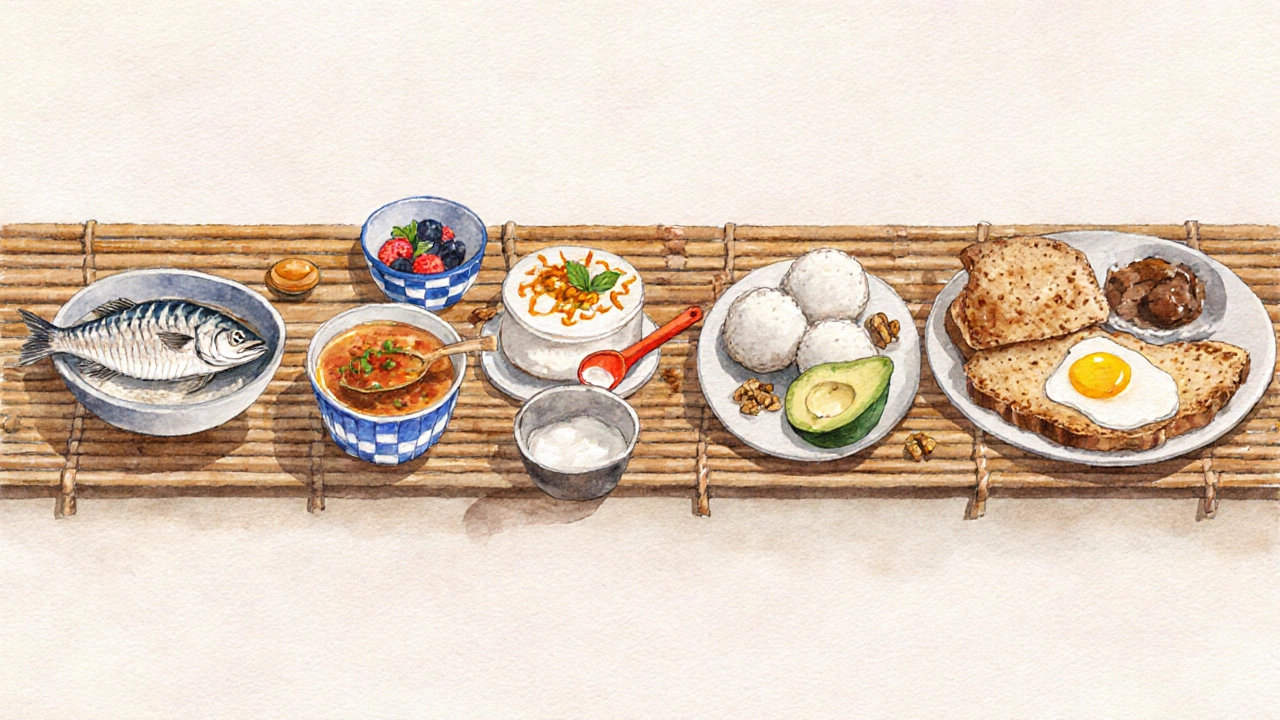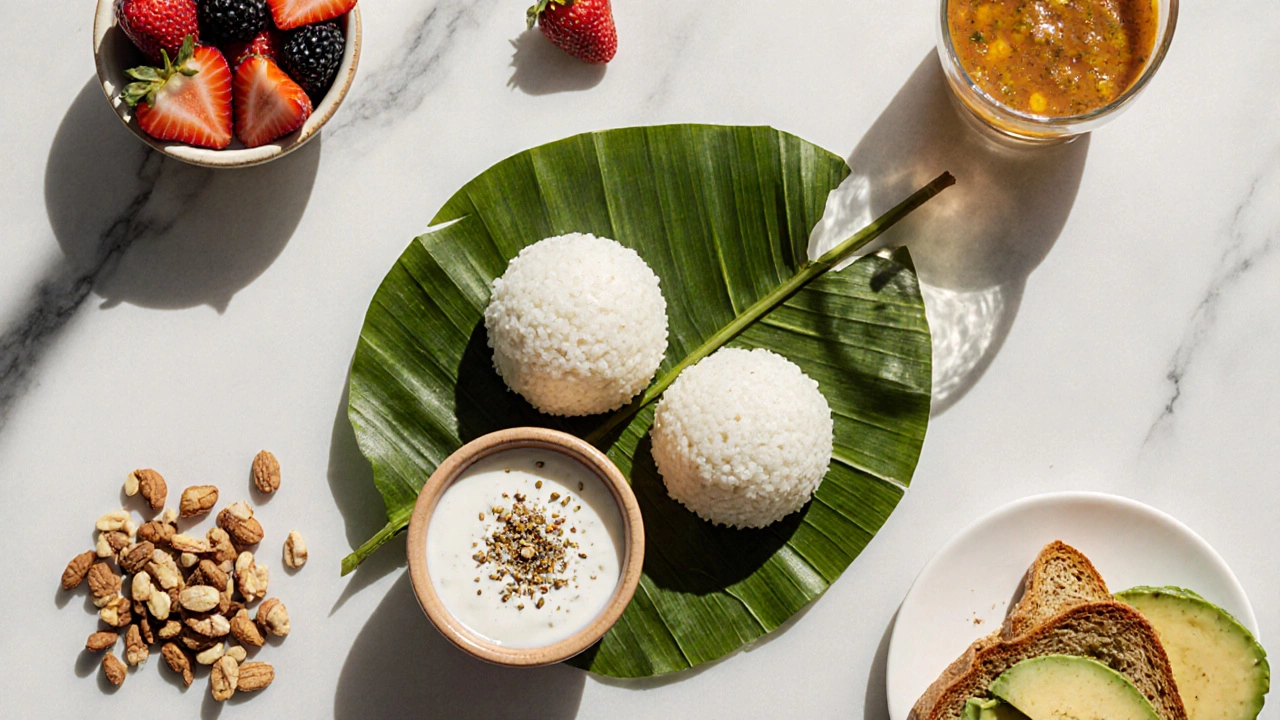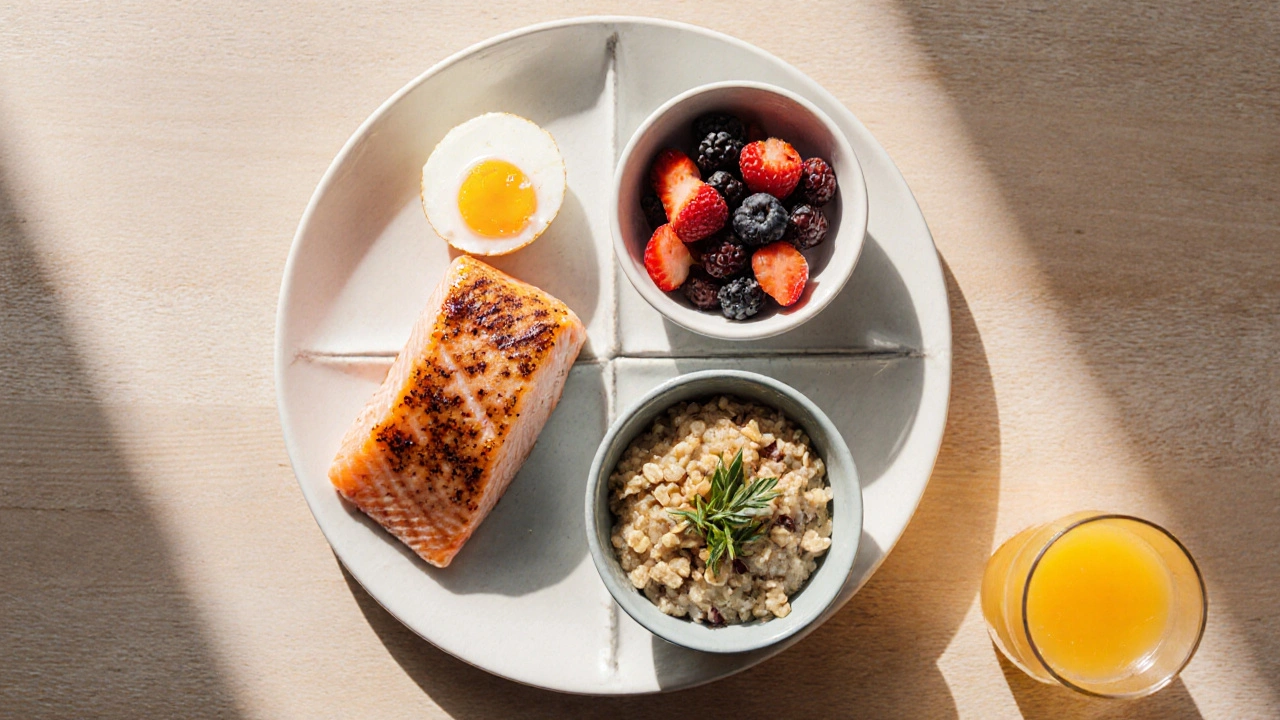Ever wondered which nation’s morning plate packs the most nutrients without the extra calories? Below we break down the science, the typical dishes, and the easy swaps you can make at home - especially if you’re after a quick Indian‑style start.
What makes a breakfast truly healthy?
Nutritionists usually score a breakfast on four pillars:
- Protein: keeps you full and stabilises blood sugar.
- Fiber: aids digestion and slows glucose spikes.
- Whole‑food carbs: provide steady energy.
- Micronutrients: vitamins and minerals that support immunity and brain function.
When a meal checks all four boxes while staying under 500 kcal, it’s typically labeled a healthy breakfast - a morning meal that delivers balanced macronutrients, high fiber, and essential micronutrients without excess sugar or saturated fat.
How we compared countries
We gathered data from national nutrition surveys, peer‑reviewed studies, and popular breakfast menus. Each country was evaluated on average protein (g), fiber (g), added sugar (g), and total calories per typical serving. The goal was to highlight the most nutrient‑dense, everyday options-not exotic gourmet dishes.
Top contenders for the healthiest breakfast
| Country | Typical Items | Protein (g) | Fiber (g) | Added Sugar (g) | Calories |
|---|---|---|---|---|---|
| Japan | Steamed rice, grilled fish, miso soup, natto | 22 | 5 | 2 | 380 |
| Sweden | Whole‑grain crispbread, cheese, boiled egg, berries | 18 | 7 | 3 | 410 |
| India | Idli, sambar, coconut chutney, plain yogurt | 15 | 6 | 4 | 350 |
| Greece | Greek yogurt, honey, nuts, whole‑wheat pita | 20 | 8 | 5 | 420 |
| Australia | Vegemite on whole‑grain toast, poached egg, avocado | 19 | 7 | 2 | 390 |
By these metrics, Japan edges ahead thanks to its high‑protein fish and low‑sugar fermented foods. Sweden and Greece follow closely with a strong fiber‑rich, dairy‑based breakfast.

Quick Indian breakfast that’s already in the top five
Indian mornings often get a bad rap for being heavy or fried, but traditional items like idli (steamed rice‑lentil cakes) and sambar (a vegetable‑legume stew) hit the sweet spot. They’re low‑calorie, high‑protein, and pack a fiber punch thanks to the lentils.
- Steam a batch of idli (about 150 g each) - roughly 90 kcal.
- Prepare sambar with chickpeas, carrots, and drumsticks - adds 6 g protein and 4 g fiber.
- Serve with a side of plain low‑fat yogurt (100 g) for extra calcium and probiotics.
The total comes to under 350 kcal, 15 g protein, and 6 g fiber - a solid nutrient profile that rivals the best global options.
How to upgrade any breakfast to a healthier version
- Swap refined carbs for whole grains. Replace white toast with whole‑grain bread or millet porridge.
- Add a protein source. Think boiled eggs, Greek yogurt, paneer, or beans.
- Boost fiber instantly. Toss a handful of nuts, seeds, or fresh berries onto cereal.
- Limit added sugar. Use natural sweeteners like a drizzle of honey only when needed.
- Don’t forget veggies. Adding shredded carrots, spinach, or tomatoes adds micronutrients without calories.

Checklist for a nutrient‑dense breakfast
- Protein ≥ 15 g
- Fiber ≥ 5 g
- Added sugar ≤ 5 g
- Total calories ≤ 500 kcal
- At least one whole‑food carbohydrate (whole grain, fruit, or legume)
Common myths busted
Myth 1: Skipping breakfast helps weight loss.
Reality: Skipping often leads to larger meals later and spikes insulin. A balanced morning meal stabilises appetite.
Myth 2: All cereal is healthy.
Reality: Many store‑bought cereals are loaded with sugar. Look for whole grain and low‑sugar labels.
Myth 3: A big breakfast is only for athletes.
Reality: Everyone needs sufficient protein and fiber to start the day, regardless of activity level.
What is the healthiest protein source for breakfast?
Eggs, Greek yogurt, tofu, and legumes (like lentils or chickpeas) all provide high‑quality protein with minimal saturated fat. Choose one that fits your taste and dietary restrictions.
Can I make a quick Indian breakfast that’s under 300 calories?
Yes. Steam two small idlis (≈ 90 kcal), add a quarter‑cup of sambar (≈ 60 kcal), and a spoonful of low‑fat plain yogurt (≈ 50 kcal). Total stays around 200 kcal while delivering protein and fiber.
Why does Japan rank high for breakfast nutrition?
Japanese breakfasts combine steamed rice (complex carbs), grilled fish (lean protein, omega‑3), and fermented foods like natto (protein, probiotic bacteria). The dishes are low in added sugar and portion‑controlled, hitting the four nutrition pillars.
How much fiber should a breakfast contain?
Aim for at least 5 g of fiber per meal. This can come from whole grains, fruits, nuts, seeds, or legumes.
Is it okay to have fruit juice with breakfast?
Fruit juice often lacks fiber and can be high in sugar. If you crave juice, limit to a small 100 ml serving or choose a whole fruit instead.
